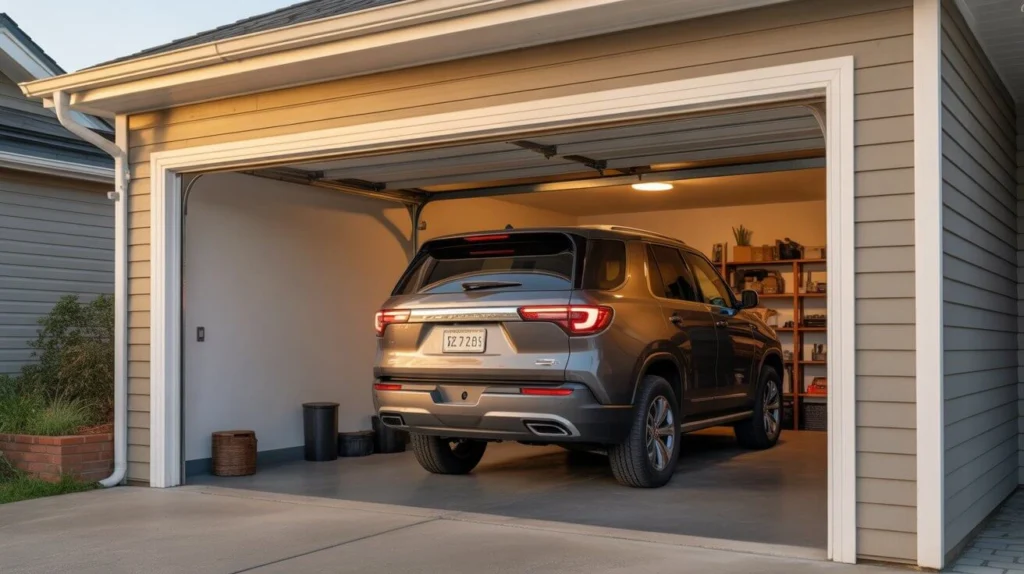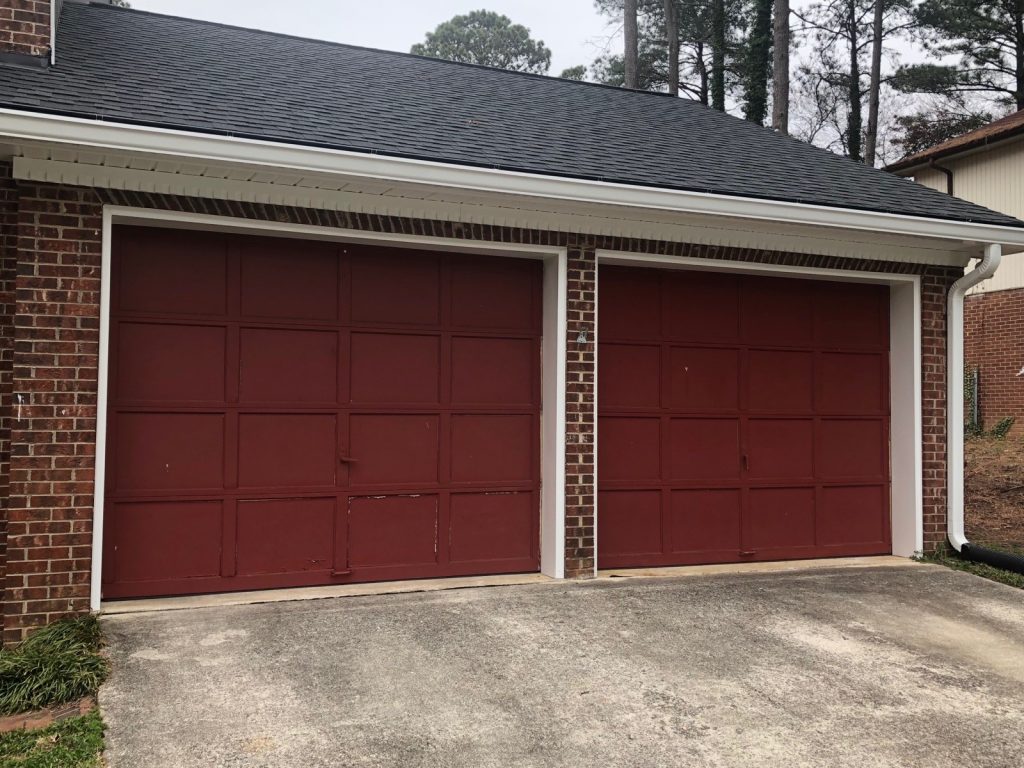Choosing the right garage door sizes is more important than most homeowners realize. The size you choose affects parking convenience, vehicle clearance, future upgrades, storage space, and how smoothly your garage functions for everyday use. Whether you’re building a new home, replacing an old door, or planning space for a larger vehicle, knowing the standard garage door dimensions helps you avoid costly rework later.
As someone who works in digital garage doors installation and planning, I’ve seen many homeowners struggle simply because they picked a size that looked standard—but didn’t fit their long-term needs. This guide walks you through the most common garage door sizes, how to measure correctly, and what to consider before buying.

Content
Why Garage Door Sizes Matter
A garage isn’t just a place to park your car—choosing the right garage door sizes also ensures you have enough room for seasonal storage, tools, gym equipment, lawn gear, and even power backup systems or EV chargers.
Selecting the right size ensures:
- Comfortable parking space
- Enough clearance for mirrors, roof racks, and tailgates
- Space for future vehicle upgrades (SUVs, EVs, RVs)
- Room for cabinets, workshop stations, or storage
Many homeowners come asking questions like:
- What is the standard size for a single garage door?
- Do I need more space for an SUV or truck?
- Should I choose a custom garage door size?
This article answers these questions in a practical way using real measurements.
Standard Garage Door Sizes (Most Common Options)

While custom doors exist, most residential homes follow predictable dimensions. Here’s a breakdown of typical single, double, and RV garage door sizes.
Single-Car Garage Door Sizes
Common dimensions include:
- 8×7 feet
- 9×7 feet
- 10×7 feet
These sizes are best for sedans, compact cars, and small SUVs. If you plan to own a mid-size SUV, consider at least 9×7 for added clearance.
Double-Car Garage Door Sizes
For two vehicles, most homes use:
- 12×7 feet
- 14×7 feet
- 16×8 feet (wide format option)
If you park two large SUVs or need space between cars, go wider rather than taller. This helps avoid door dings and gives more walking space around vehicles.
RV & Oversized Garage Door Sizes
If you own a camper, lifted truck, or RV, go beyond standard sizing:
- 16×8 feet
- 18×8 feet
- custom garage door sizes (for tall vehicles)
Always leave extra clearance for roof equipment like solar panels or air-conditioning units.
How to Measure for a New Garage Door Installation
Even if you know common garage door sizes, your specific opening may vary. Here’s how to measure correctly:
Step-by-Step Measuring Guide
- Measure width: (left jamb to right jamb—measure top, middle, bottom)
- Measure height: (floor to header)
- Check side room: (space for tracks & brackets)
- Measure ceiling clearance: (space for torsion springs)
- Measure backroom: (door roll-up space)
This ensures your opening supports standard doors and avoids modification costs.
How Vehicle Size Affects Garage Door Selection

Your vehicle may fit today—but what about the one you buy next?
Average Vehicle Dimension
| Vehicle Type | Avg.Width | Recommended door size |
| Compact car | 5.5–6ft | 8*7 ft |
| Standard sedan | 6–6.5ft | 9*7 ft |
| Large SUV/ Truck | 6.6–7.5ft | 10*7– 16*8 ft |
If you’re planning to buy an SUV, lifted truck, or electric vehicle that requires charging space, consider wider and taller sizing.
Real-Life Case Study: The SUV Clearance Problem
Last year, I helped a homeowner who installed an 8×7 ft single garage door when building his house. At the time, he drove a small sedan, so it worked perfectly.A year later, he bought a large SUV with a roof rack—and suddenly the garage door was too low by just 2 inches.
To fix it, we had to:
- Remove the header
- Raise the opening to 9 feet
- Install a custom enlarged door
The total cost was almost 3× higher than installing a taller door during construction.Lesson: It’s easier and cheaper to build big first than enlarge a garage door opening later.
Future-Proofing Your Garage Space
Before finalizing your garage door size, consider:
- Will you upgrade to an SUV or electric vehicle soon?
- Do you need space for tools, cabinets, or gym equipment?
- Will the garage double as a workshop or storage room?
- Do you plan to store seasonal gear or sports equipment?
Final Thoughts

Choosing the right garage door size is a long-term decision that affects usability, storage, and home value. Whether you pick standard or custom dimensions, always measure carefully, consider future vehicles, and evaluate how you’ll use the space beyond just parking. A well-planned garage makes life easier—not cramped, unlike a revolving door that allows only one person to pass at a time. If you’re still unsure, consult a local garage door expert to evaluate your space and help you select the perfect fit.
FAQs
How wide is a 10-foot garage door?
A 10-foot garage door width fits tall trucks, RVs, or work vans, with options like 10’x10′ or 10’x8′.
What size are garage doors in the UK?
Common UK garage door sizes include 7’x6’6″ and 7′ high for single garages.
What is the most common garage size?
Average sizes: 1-car 12’x22′, 2-car 20’x22′, oversized 2-car 24’x24′, 3-car 30’x30′.
Do I need a 1/2 or 3/4 hp garage door opener?
Choose based on door weight: 1/2 hp for standard doors, 3/4 hp for heavier or insulated garage doors.

Laura lives and breathes garage doors. She’s the one to turn to when you need insights on keeping your garage secure and functioning smoothly.











